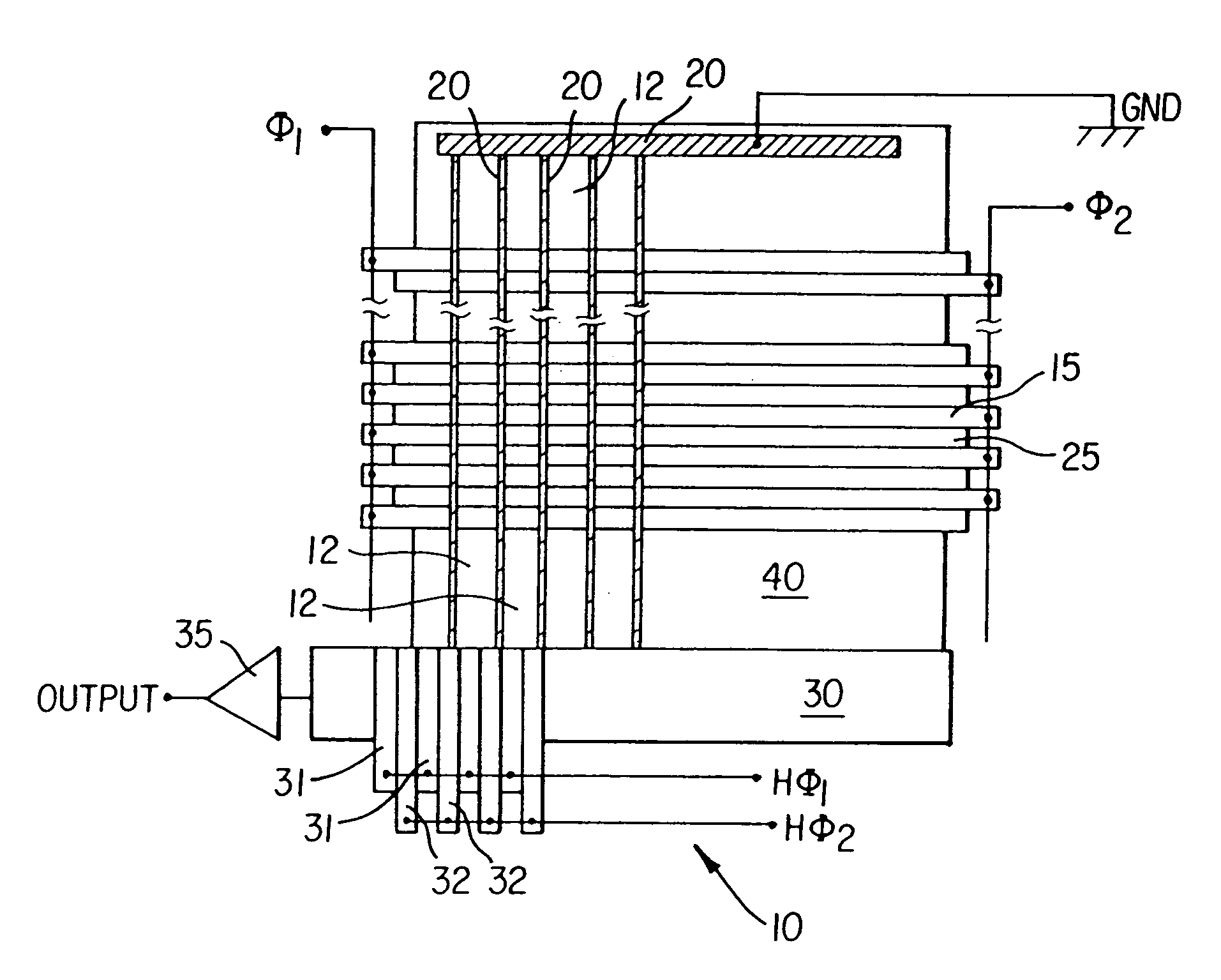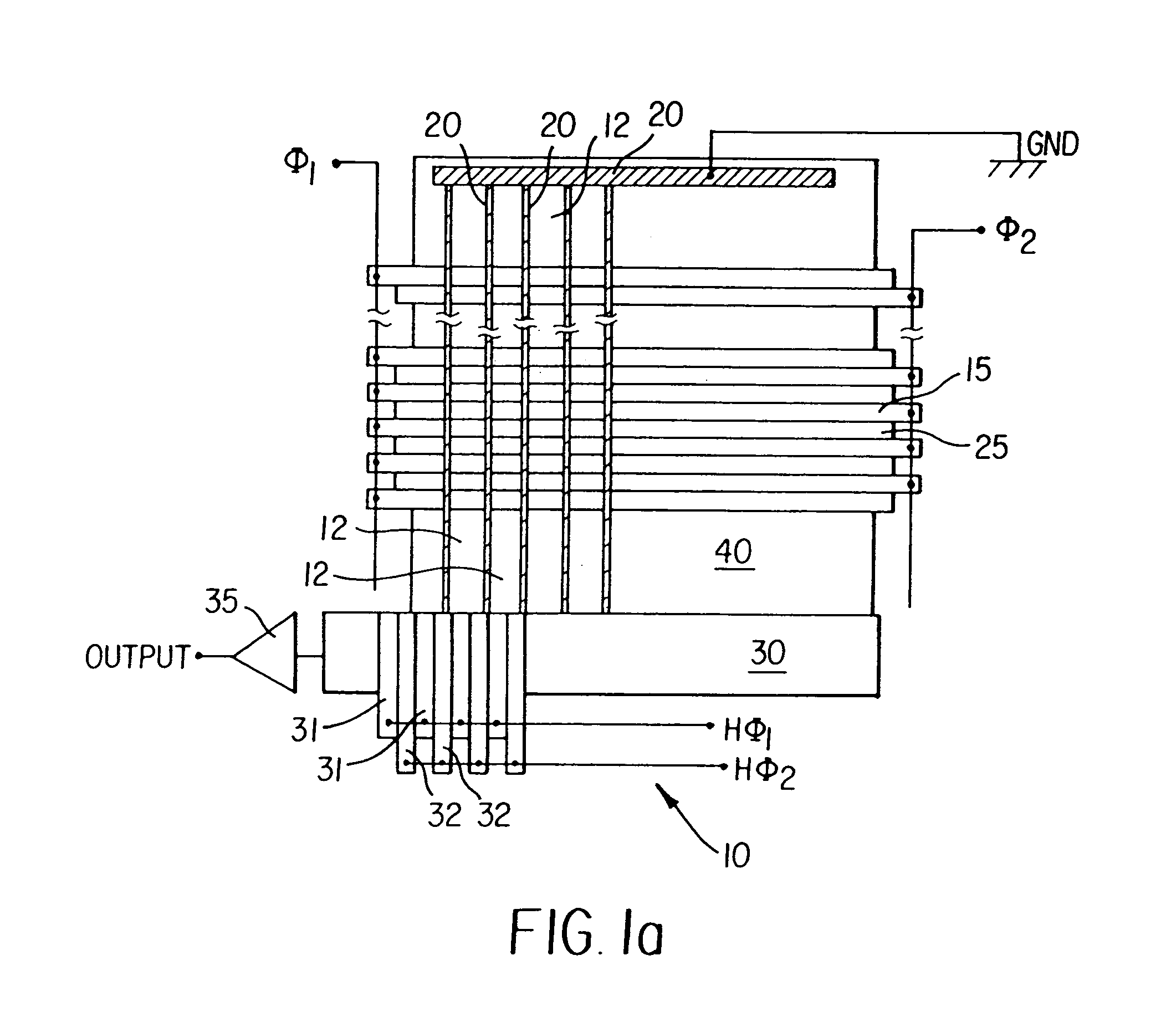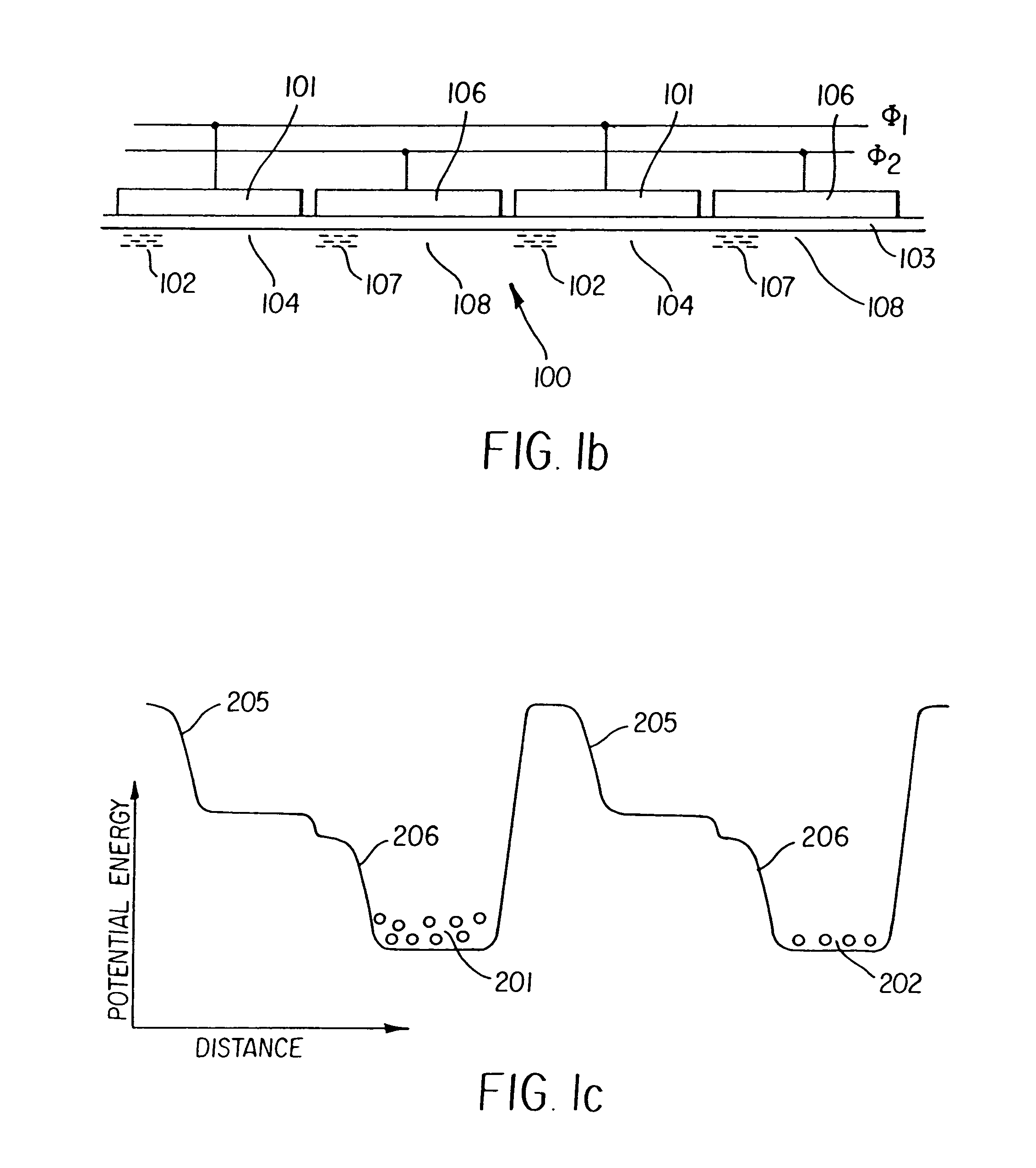Method for reducing dark current
a technology of dark current and charge, applied in the field of charge coupled devices, can solve the problems of thermally generated charge, low conductance of channel stops, undesirable dark current, etc., and achieve the effect of reducing dark current and avoiding p-well boun
- Summary
- Abstract
- Description
- Claims
- Application Information
AI Technical Summary
Benefits of technology
Problems solved by technology
Method used
Image
Examples
Embodiment Construction
[0037]As discussed above, during the so-called accumulation mode clocking of the vertical shift register, one set of gates changes from a condition where holes are accumulated beneath the gate, at the Si—SiO2 interface, to a condition where the surface is depleted of holes. This results in excess hole charge being present which must be drained off. During the time required to drain off the excess hole charge, the p-well or substrate potential moves. This undesirable potential variation is referred to as p-well bounce. The present invention provides a means for maintaining accumulation mode clocking while avoiding the p-well bounce.
[0038]The fundamental problem that results in p-well bounce is that of disposal of the excess hole charges accumulated beneath one of the sets of gates of the CCD when that phase is switched out of accumulation and into depletion, and, conversely, the replenishment of the required hole charges when returning to the gates to accumulation. This problem becom...
PUM
 Login to View More
Login to View More Abstract
Description
Claims
Application Information
 Login to View More
Login to View More - R&D
- Intellectual Property
- Life Sciences
- Materials
- Tech Scout
- Unparalleled Data Quality
- Higher Quality Content
- 60% Fewer Hallucinations
Browse by: Latest US Patents, China's latest patents, Technical Efficacy Thesaurus, Application Domain, Technology Topic, Popular Technical Reports.
© 2025 PatSnap. All rights reserved.Legal|Privacy policy|Modern Slavery Act Transparency Statement|Sitemap|About US| Contact US: help@patsnap.com



